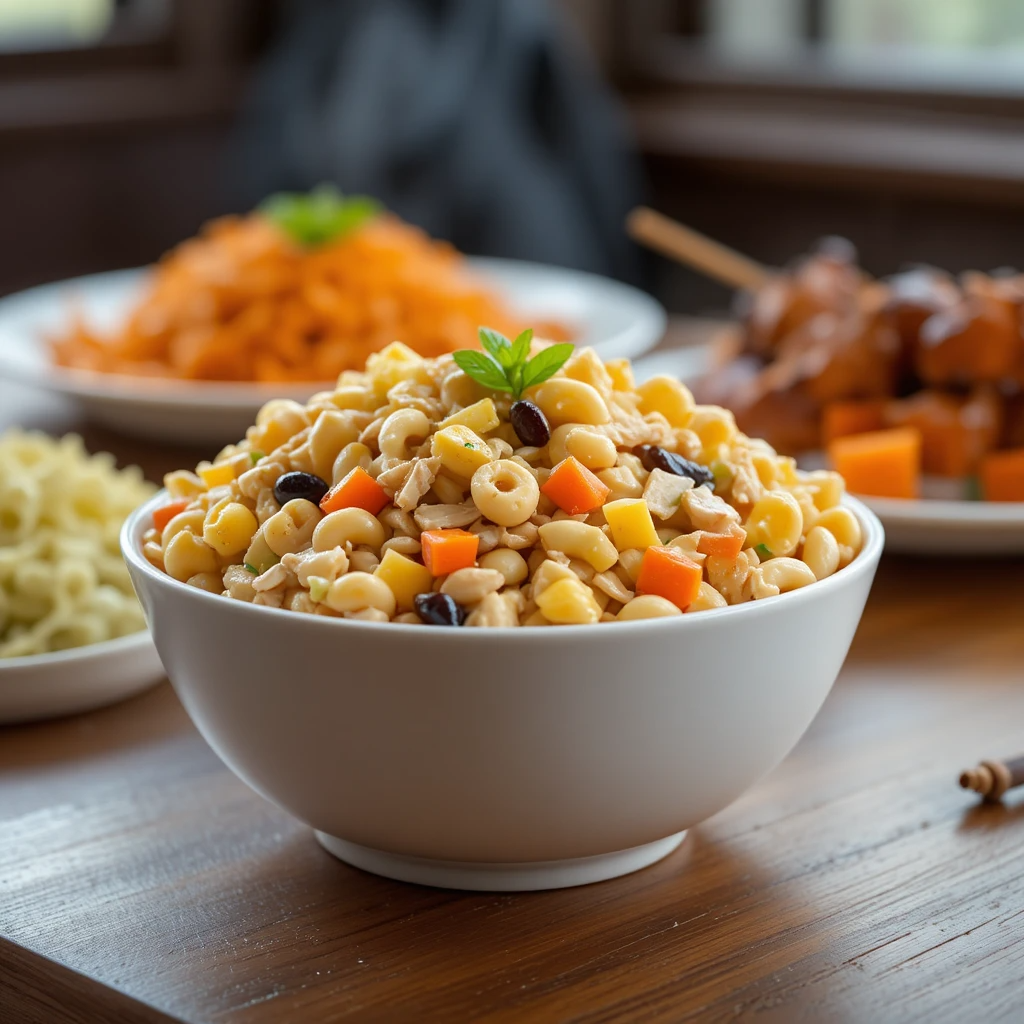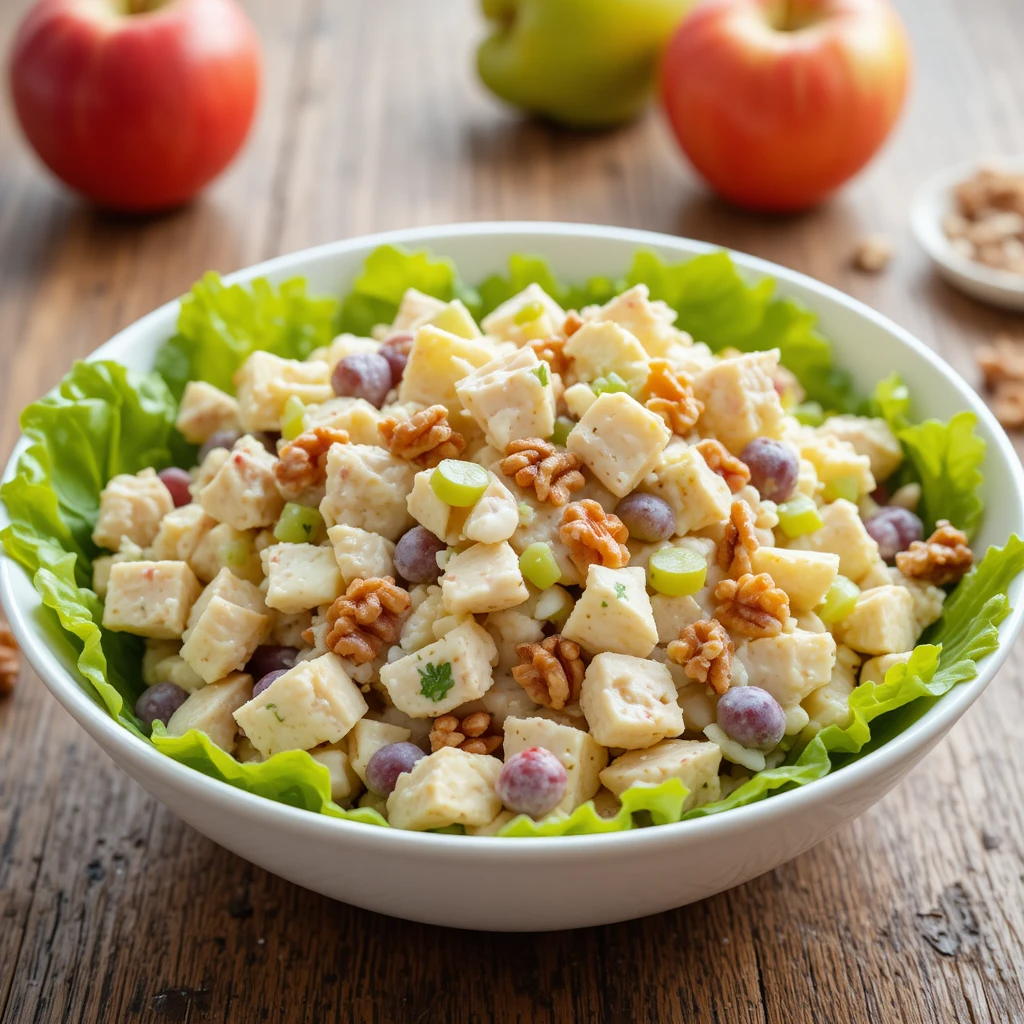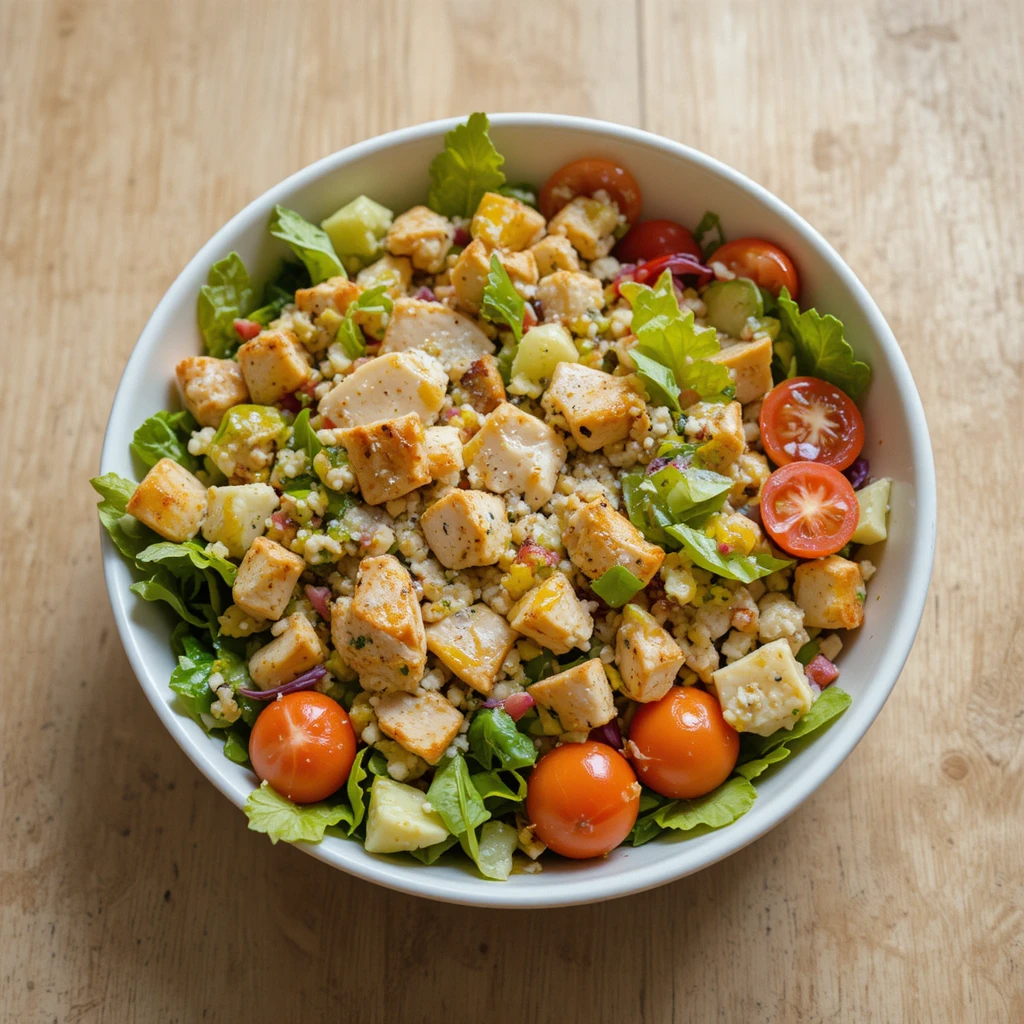Chicken Salad Recipe No Celery: Easy, Tasty & Simple to Make at Home
Making a chicken salad that taste fresh but also super simple is something many people want. And sometimes you don’t want celery in it, maybe you ran out, or maybe you just dont like that crunchy-stick veggie. This Chicken Salad Recipe No Celery fits that need perfectly. It gives a soft texture, mild flavor, and honestly it works great for sandwiches, wraps, or even a spoon right out the bowl. I try to keep things simple in this guide, even if the writing got a bit messy here and there.
Why This Chicken Salad Recipe Works So Well
It’s gentle in flavor.
It’s quick to mix.
It uses very basic ingredients that most kitchens already have.
And it really does taste better after chilling.
Even tho the recipe is easy, sometimes you may notice I switch tenses or add a comma weird, but that’s okay—it feels more like a real person talking in a kitchen, not a robot cookbook.
Chicken Salad Recipe No Celery for Your First Try
The cool thing about removing celery is that it actually lets the other flavors shine more. Some people prefer a softer bite. Some dont like the celery strings. Some just forgot it at the store again (I do that always lol).
Ingredients You Will Need
Most of the ingredients stay classic. You only skip celery, but still get a nice balance.
- 2 cups cooked chicken, shredded or chopped
- 1/3 cup mayonnaise
- 1 tbsp lemon juice
- 1 tsp mustard (yellow or Dijon, either works)
- 1/4 cup finely diced onion
- Salt + pepper to taste
- Optional add-ins: grapes, dill, paprika, chopped pickles, boiled eggs
Keep ingredients small and even so the salad stays creamy. If the chicken was too dry, little extra mayo usually fix that right away.
How to Prepare the Mixture
First, make sure your chicken is already cooked. Rotisserie chicken works best, but leftover grilled chicken also taste pretty great.
Then mix the mayo, lemon juice, and mustard in a bowl. It will be your dressing base.
Add the onion, plus whatever optional add-ins you like.
Finally, stir in the chicken. Some people mix too hard and smash the meat, but gentle mixing keeps pieces nice.
Let it chill for at least 20 minutes. It sound optional, but it really helps flavors combine better, kinda like magic but food-style.
Texture Tips Without Using Celery
Without celery, the texture can feel extra soft, which lots of people love.
But if you want a slight crunch, you can use these alternatives:
- Chopped apples
- Toasted almonds
- Crushed crackers
- Finely diced bell pepper
They add crunch without changing the classic chicken salad vibe too much.
Why Some People Remove Celery from Their Chicken Salad
There is few reasons why folks skip celery:
It has strong smell that not everyone likes.
Its crunch may feel too sharp for soft salads.
Sometimes kids say it looks like green sticks and refuse to eat it.
And honestly… sometimes celery just isn’t around at the moment.
So by leaving it out, the salad becomes more mild and creamy, which many people prefer.
Flavors That Go Well With a No-Celery Version
You can control the taste more easily.
Add paprika for warmth.
Add dill if you want herby fresh vibes.
Add a bit of sugar if the lemon juice turned too tangy—just tiny bit, not too much.
Or add chopped pickles if you want old-school diner style flavor.
Tweaking is easy because there’s no celery flavor fighting for attention.
Serving Ideas That Makes the Salad More Yummy
This salad works everywhere and anytime.
Here’s few ways you could serve it:
- Spread on toasted bread for warm-cold contrast.
- Use with tortilla wraps and add lettuce for extra crunch.
- Put on crackers for a quick snack.
- Stuff inside baked potatoes.
- Serve with pasta on the side for a mini picnic-box meal.
All of them really taste nice specially if the salad sat in the fridge for a bit.
How to Store Chicken Salad Properly
Chicken salad can stay fresh around 3 days in the fridge.
Keep it in a sealed container so it stay moist.
If the mixture looks too thick next day, just mix in a tiny spoon of mayo.
Do not freeze it because mayo-based salads usually turn watery after thawing.
If storing for guests the next day, keep optional toppings separate until serving so things don’t get soggy.
Common Mistakes People Make When Making This Recipe
Not seasoning enough.
Too much mayo or too little mayo.
Using chicken that was not cooled yet (makes everything runny).
Overmixing which breaks the chicken down too mushy.
Adding too many extras so the salad taste confused, like it doesn’t know what it want to be.
These mistakes are easy to avoid once you try making the recipe a couple times.
Quick Troubleshooting If Your Salad Doesn’t Taste Right
If too salty: add more chicken or more mayo.
If too bland: add lemon juice, salt, or mustard.
If too dry: add mayo slowly, bit by bit.
If too wet: add more chicken or even a spoon of breadcrumbs.
If too tangy: balance with a sprinkle of sugar or a dash of mayo.
These small adjustments fix almost any flavor issue that pops up randomly.
Simple Variations You Can Try Next Time
Even tho this is a no-celery version, you can still make fun twists.
Creamy herb version: add dill, parsley, or chives.
Sweet version: add grapes, raisins, or diced apples.
Savory version: add paprika, garlic powder, or onion powder.
Pickle version: add chopped pickles + a little pickle juice.
Egg-mix version: add chopped boiled eggs for a richer texture.
These variations let you customize the recipe depending on mood or what ingredients you found in the fridge.
How to Make the Chicken Tender Every Time
Dry chicken creates dry salad.
To keep it tender:
Boil chicken gently instead of fast.
Shred while warm for smoother texture.
Store cooked chicken in a bit of broth until you use it.
Use thigh meat if breast meat feels too dry for your taste.
This makes the salad smoother with less effort.
Small Extra Tips for Better Flavor
Use fresh lemon juice instead of bottled one.
Let salad rest before serving so flavor blends more nicely.
Taste before adding extra salt because mayo already have salt sometimes.
Use onion in small amounts if you don’t want strong smell.
These tiny details may look small, but they impact the final taste a lot.
Make Ahead Option for Busy Days
You can prep chicken a day ahead.
You can mix the dressing the night before.
Then just combine everything the next day.
It saves time when you’re rushing or feeling low-energy.
This slow prep method often gives even better flavor because ingredients blend more evenly.



